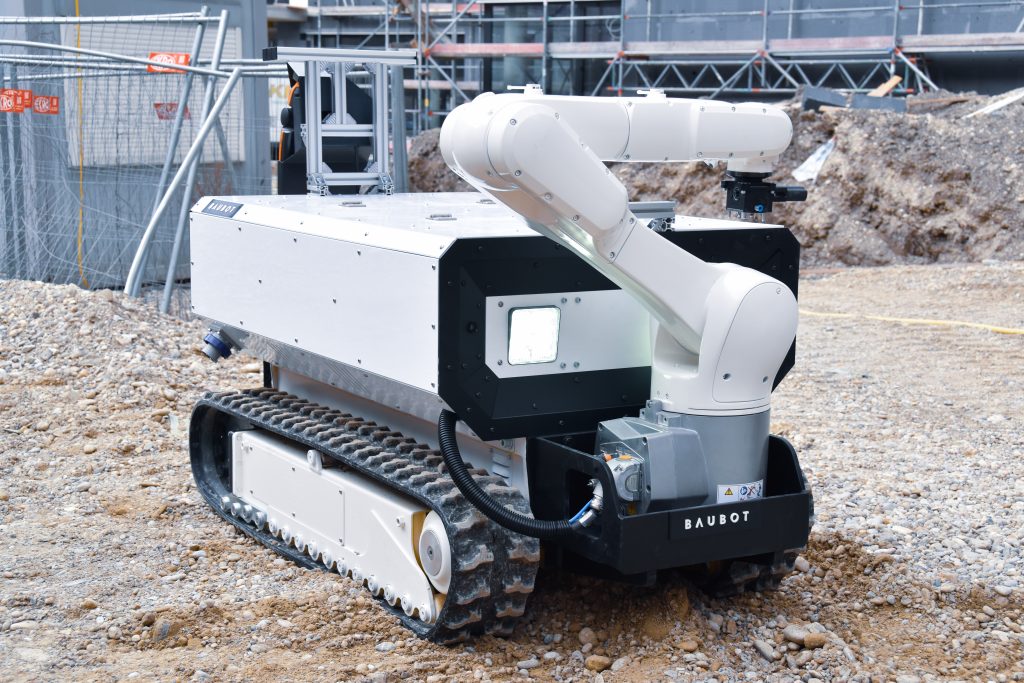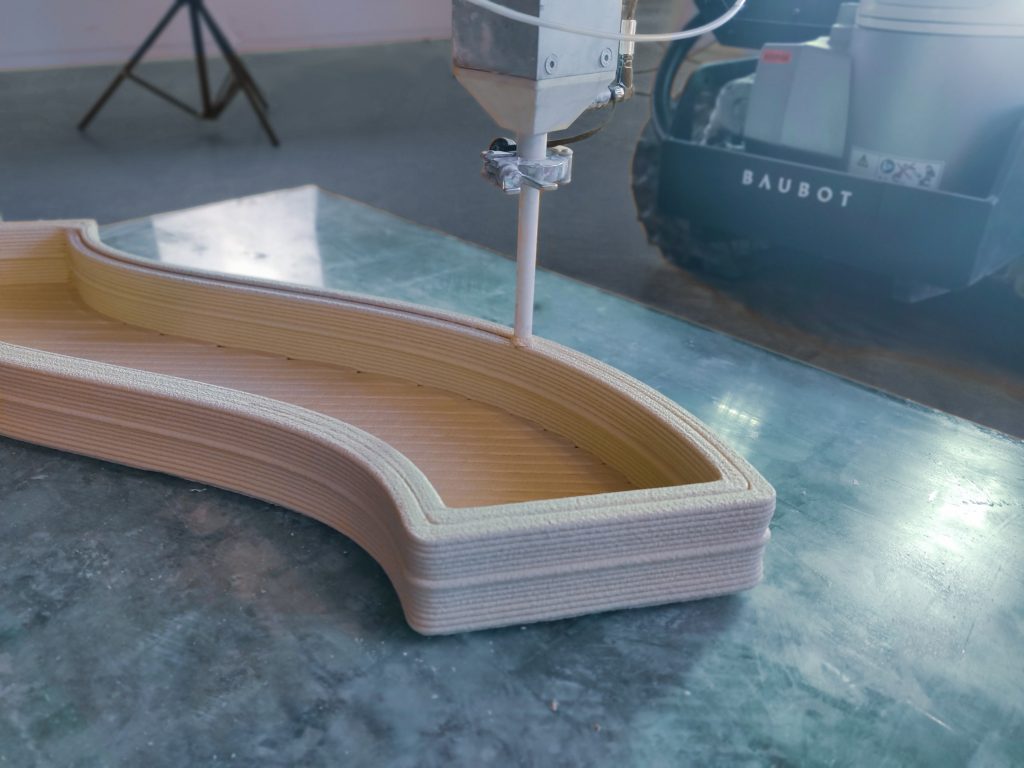Printstones, an Austria-based manufacturer of mobile 3D printing robots for the construction sector, has announced the launch of its latest manufacturing robot.
The Baubot is characterized by its modular design, meaning it allows for third-party customer modifications with ease. Described as a ‘multi-functional construction robot’, the rover-esque device goes beyond just concrete 3D printing, and is capable of a whole host of flexible manufacturing operations such as material transportation, welding, milling, screwdriving, plasma cutting, painting, and even brick laying.
With the goal of making construction sites safer and more efficient for laborers, Printstones is releasing a specialized software development kit (SDK) for use with the Baubot. The aim is to allow customers to customize their robots with novel tools and applications as they see fit, providing a truly adaptable product fit for any manufacturing site.

The Baubot
Designed to fit in the back of a truck, the new Baubot comes equipped with a set of continuous tank tracks, making it well-suited to just about any terrain. It can climb stairs, drive through doors, and is completely powered by an electric battery (up to eight hours). With a maximum speed of 3.2km/h, the robot sports a payload limit of 500kg. The Baubot also features a robotic arm with a reach of 1m and a dimensional accuracy of 1mm.
Customers are able to use the vehicle in both a manual mode and a pre-programmed mode, whereby the robot’s workday can be predetermined in advance. In the future, Printstones intends to add BIM data functionality, which can be used to simulate the Baubot in its work environment to optimize its routines. With BIM data, the robot will have completed its rounds thousands of times before even stepping foot on the construction site.
Additionally, the company can train a centralized AI using both modeling data and real-world sensor data from its robots. While the current iteration of the Baubot is designed to operate on its own, an all-encompassing AI would allow swarms of Baubots to work in tandem on construction sites to streamline production.

Taking it beyond the construction site
Printstones states that the Baubot, although optimized for construction and concrete 3D printing, is not limited to construction sites. There’s nothing stopping a customer from utilizing the vehicle in the shipbuilding or aerospace sectors, or for inspection and maintenance purposes in existing infrastructure such as power plants. Whatever the application, the Baubot works with a standard transponder and requires next to no setup time.
The use of these robots is expected to vastly improve the safety of manufacturing sites for human employees, all while reducing building and maintenance costs in the long-term. As a bonus, since physical strength and agility are largely taken out of the equation, construction site jobs could become available to a wider range of individuals with greater variance in ages, genders, and physical abilities.

The adoption of on-site 3D printing is expected to be a major turning point for the construction sector. Just last month, Texas-based construction company ICON listed its first U.S-based 3D printed homes on the domestic housing market, with prices starting at around $450,000. Working with developer 3Strands, ICON used its Vulcan 3D printers for the project, constructing four multi-storey buildings in East Austin.
Elsewhere, in India, the country’s largest construction company, Larsen & Toubro Construction (L&T), recently completed its first 3D printed two-storey building. With a modest floor space of 65m², the building was fabricated using a large-format concrete 3D printer supplied by OEM COBOD, and is made up of a locally sourced 3D printable concrete mix.
Subscribe to the 3D Printing Industry newsletter for the latest news in additive manufacturing. You can also stay connected by following us on Twitter and liking us on Facebook.
Looking for a career in additive manufacturing? Visit 3D Printing Jobs for a selection of roles in the industry.
Featured image shows the multi-functional Baubot. Photo via Printstones.



